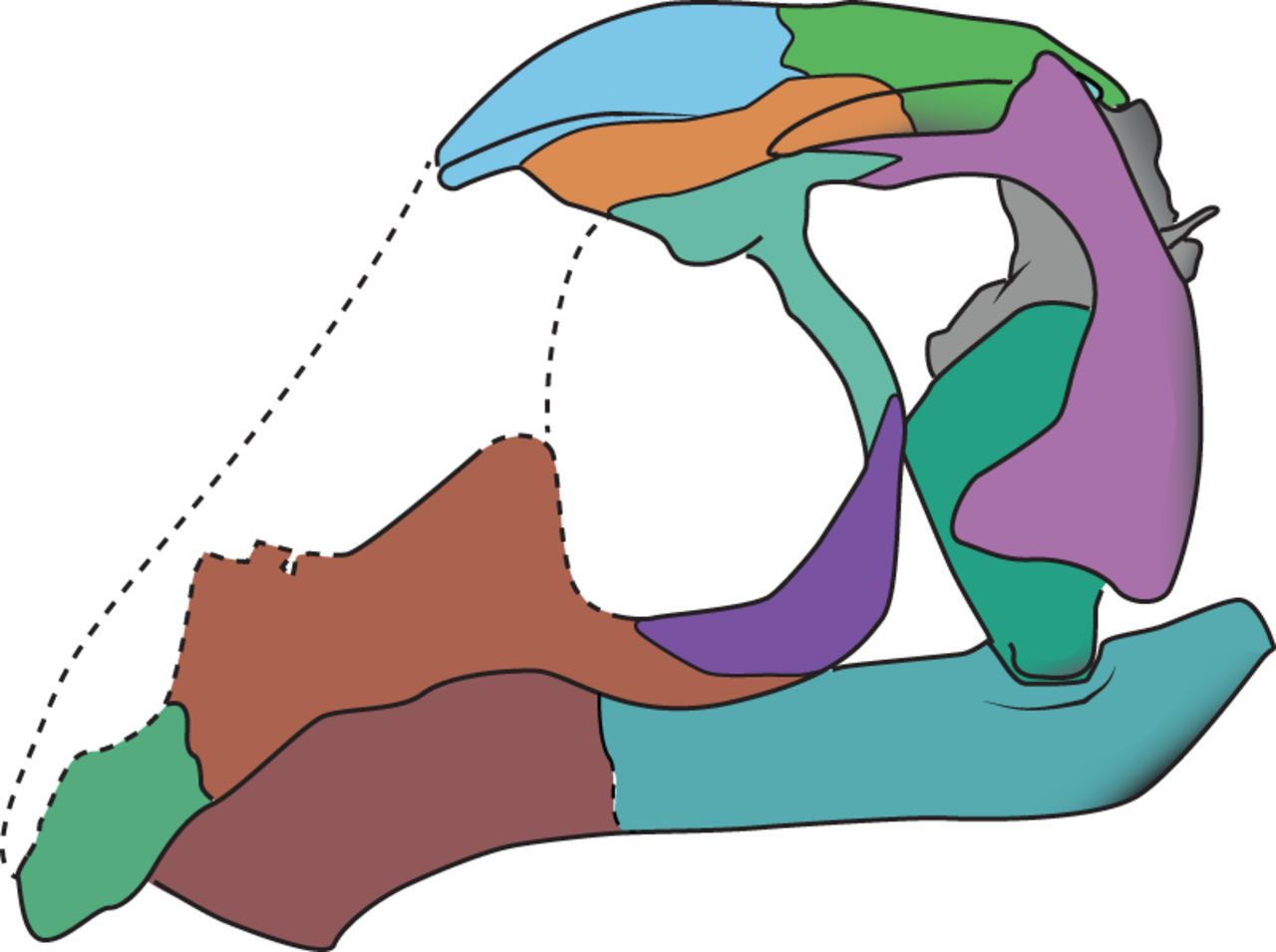Imagine an animal with the body of a chameleon, the feet and claws of an anteater, the humped back of a camel, and a tail that is both flattened like a beaver’s, but also like that of a scorpion. If you’re thinking this sounds like someone just threw your local zoo into a blender — or that it’s not far off from mythical creatures like the chimera or manticore — this would be understandable. But this bonkers description fits a real, long-extinct group of tree-dwelling reptiles that lived more than 200 million years ago. Now, a new species of these freaky little critters has been identified, and its fossilized remains pile onto the anatomical strangeness, showing that this ancient reptile evolved a toothless, remarkably bird-like head in a world 100 million years before birds with heads like this even existed.
Avicranium renestoi. Artistic reconstruction by Matt Celeskey.
The new species — Avicranium renestoi, unearthed in New Mexico and described in a new paper published in The Royal Society Open Science — is a member of an enigmatic lineage of Triassic reptiles known as the Drepanosauromorpha. Drepanosaurs have only been known to science for a handful of decades, turning up sporadically in North America and Europe.
What we know about them comes from incomplete skeletons of a small number of species, which are strikingly diverse in anatomy, each one discovered being stranger than the last. They appear to be specialised for a life stalking insects in the trees, with most species sporting powerful gripping limbs and long, prehensile tails. Because of these traits, drepanosaurs were at one time called “simiosaurs”, literally “monkey-lizards,” though they are only distantly related to actual lizards. Many species had tall humps and ridges over their shoulders, claw tips on their tails, and heads that were odd compared to their reptile contemporaries — triangular and fragile. The Avicranium fossil is an important find because it represents one of the few known drepanosaur skulls — one that has also retained its three-dimensional shape (unlike other mangled and compressed drepanosaur skulls).

Line drawing of the restored skull of Avicranium renestoi based on the three-dimensional surface renderings of skull elements. From Pritchard and Nesbitt, 2017.
Using a combination of CT scanning and computer modelling to map and visualise its shape, researchers were able to accurately reconstruct Avicranium‘s skull, revealing a head that looked like it belonged on an animal nowhere near Avicranium‘s branch of the Tree of Life, and that wouldn’t exist for tens of millions of years. While some features of Avicranium‘s noggin betray its status as an early offshoot from the reptile line (like its ear bones), there are plenty of other extreme modifications that make Avicranium look like it should show up at your backyard bird feeder.
The snout is completely toothless and beak-like, unusual even among drepanosaurs. The large eyes face forward, probably providing stereoscopic vision. Most notably, the braincase balloons outward in a way really only seen in flying reptiles, like pterosaurs and maniraptorans (birds and their close relatives). It’s possible that Avicranium‘s life as a specialist at treetop living led to this cerebral remodeling. Navigating a variable, three-dimensional environment requires precise vision, depth perception, and coordination — and the brain power to process these demands. Birds and pterosaurs have similar neurological requirements for the enhanced complexity of flight.
Avicranium‘s unflinching weirdness helps paint an emerging picture of a Triassic period full of unexpected specialisation and body shape diversity in ancient, “primitive” groups of animals. Many groups of reptiles in the Triassic are now recognised as pioneering “bauplans” (body shapes) eons before evolution rehashed them for a new host of characters; it’s a process not unlike discovering all your favourite “original” songs are actually covers. Triassic waterways were patrolled by phytosaurs, which looked and lived exactly like crocodiles. There were dome-headed reptiles that were definitely not the famous head-butting dinosaurs they so closely resembled. These cases consist of “convergent evolution,” a phenomenon where evolution results in similar solutions to similar problems independently in entirely different organisms, and the new, bird-brained drepanosaur certainly fits right in.
